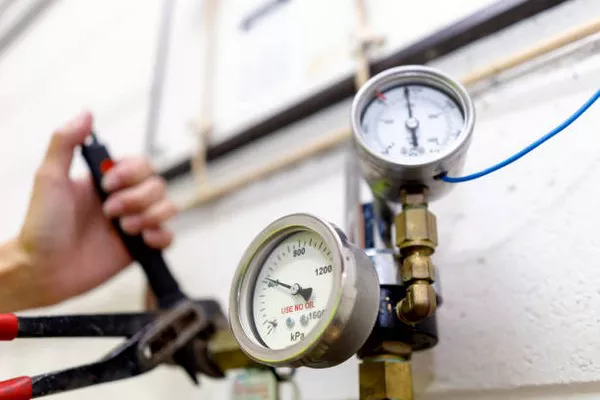In today’s complex industrial landscape, the accurate measurement and control of various physical quantities are critical for ensuring safety, efficiency, and quality in processes ranging from manufacturing to environmental monitoring. Instrumentation and measurement systems play a pivotal role in gathering, processing, and interpreting data from these processes. This article delves into the fundamentals of instrumentation and measurement systems, exploring their components, functions, and applications.
What is an Instrumentation and Measurement System?
An instrumentation and measurement system is a collection of devices, instruments, and software designed to acquire, process, transmit, display, and record data related to physical phenomena. These systems are used across diverse industries including manufacturing, energy, healthcare, aerospace, automotive, and environmental monitoring.
Components of Instrumentation Systems
Sensors and Transducers
At the core of any instrumentation system are sensors and transducers. Sensors detect physical phenomena such as temperature, pressure, flow, level, and motion, and convert them into electrical signals. Transducers are specialized sensors that transform one form of energy into another—for example, converting mechanical motion into electrical signals.
Types of Sensors: Common types include thermocouples for temperature measurement, pressure transducers for pressure sensing, flow meters for fluid flow measurement, and accelerometers for motion detection.
Signal Conditioning
Raw signals from sensors often require conditioning to be usable. Signal conditioning involves amplifying weak signals, filtering out noise, linearizing non-linear sensor outputs, and converting signals to a standardized form (like voltage or current). This step ensures accuracy and reliability in measurement.
Data Acquisition Systems (DAS)
Data acquisition systems are responsible for sampling, digitizing, and processing signals from sensors. These systems typically include analog-to-digital converters (ADCs) to convert continuous analog signals into discrete digital values that can be processed by computers or controllers.
Data Processing and Analysis
The processed data is then analyzed using software algorithms to derive meaningful information. This can involve real-time monitoring, statistical analysis, and trend prediction to optimize processes and make informed decisions.
Output Devices
The final stage of an instrumentation system involves presenting the processed data to users. This could be through visual displays such as computer screens, indicator lights, or actuators that control processes based on the measured data.
Functions of Instrumentation and Measurement Systems
Measurement: Accurately quantify physical parameters.
Control: Regulate processes based on measured values.
Monitoring: Continuously observe and record data.
Safety: Provide early warnings of anomalies or hazards.
Optimization: Improve efficiency and reduce waste.
Applications of Instrumentation Systems
Manufacturing and Process Control
In manufacturing, instrumentation systems are used to monitor parameters such as temperature, pressure, and flow rates to ensure product quality and optimize production efficiency. Process control systems use feedback loops to adjust variables and maintain desired conditions.
Automotive and Transportation
In vehicles, sensors monitor engine performance, tire pressure, airbag deployment, and fuel efficiency. Advanced driver-assistance systems (ADAS) use instrumentation for collision avoidance and autonomous driving.
Healthcare and Biomedical
In healthcare, instrumentation systems are crucial for patient monitoring, diagnostics, and medical imaging. Devices like ECG machines, blood pressure monitors, and MRI scanners rely on accurate measurements for diagnosis and treatment.
Environmental Monitoring
Instrumentation systems play a vital role in assessing air and water quality, weather forecasting, and climate monitoring. Sensors measure pollutants, temperature, humidity, and atmospheric pressure to inform environmental policies and public health decisions.
Aerospace and Defense
In aerospace, instrumentation systems are used for flight control, navigation, and monitoring of aircraft health. In defense, they enable precise targeting, surveillance, and communication in complex military operations.
Challenges and Innovations
Despite advancements, instrumentation systems face challenges such as signal interference, calibration drift, and environmental factors affecting sensor accuracy. Innovations like wireless sensor networks, MEMS (Micro-Electro-Mechanical Systems) sensors, and IoT (Internet of Things) integration are revolutionizing instrumentation by improving data accessibility, reliability, and scalability.
Importance of Calibration and Maintenance
To ensure accuracy and reliability, instrumentation systems require regular calibration and maintenance. Calibration involves adjusting and verifying the performance of instruments against a known standard. Routine maintenance includes cleaning, inspection, and replacement of worn-out components.
Future Trends in Instrumentation
The future of instrumentation systems lies in enhanced connectivity, artificial intelligence, and miniaturization. IoT integration will enable real-time data sharing across systems, while AI algorithms will automate decision-making and predictive maintenance. Miniaturized sensors will enable applications in wearable devices and personalized healthcare.
Conclusion
Instrumentation and measurement systems are indispensable tools across industries, enabling precise control, monitoring, and optimization of processes. As technology evolves, these systems will continue to advance, facilitating safer, more efficient, and environmentally sustainable operations. Understanding the fundamentals of instrumentation is key to harnessing its full potential in an increasingly data-driven world.

